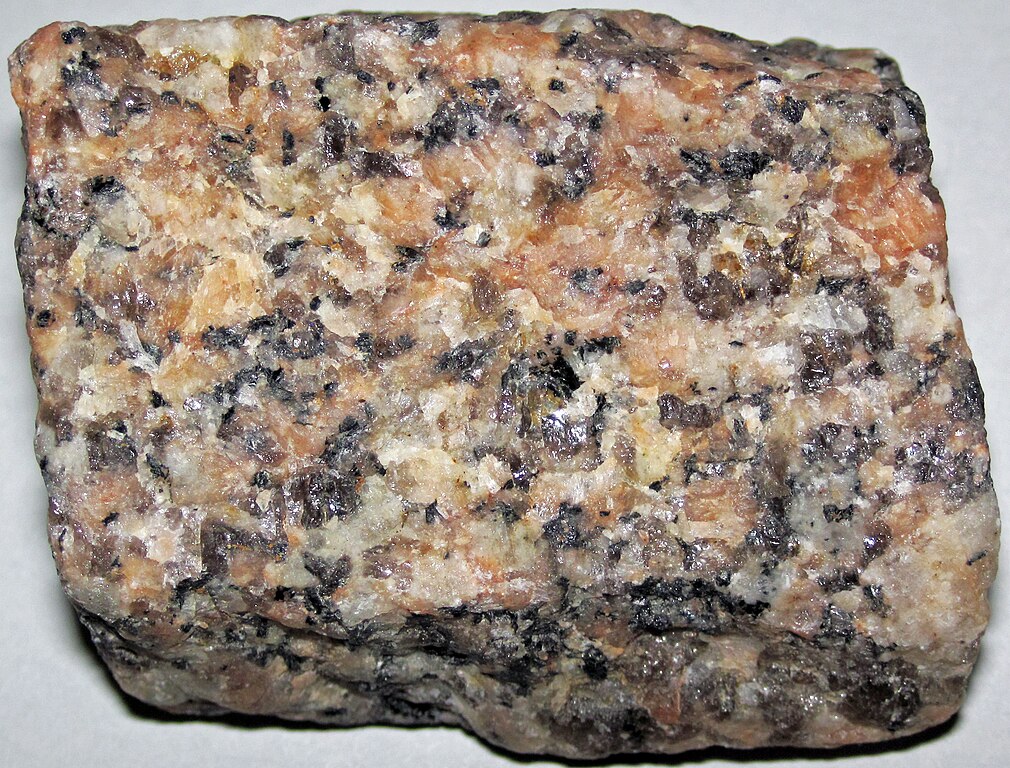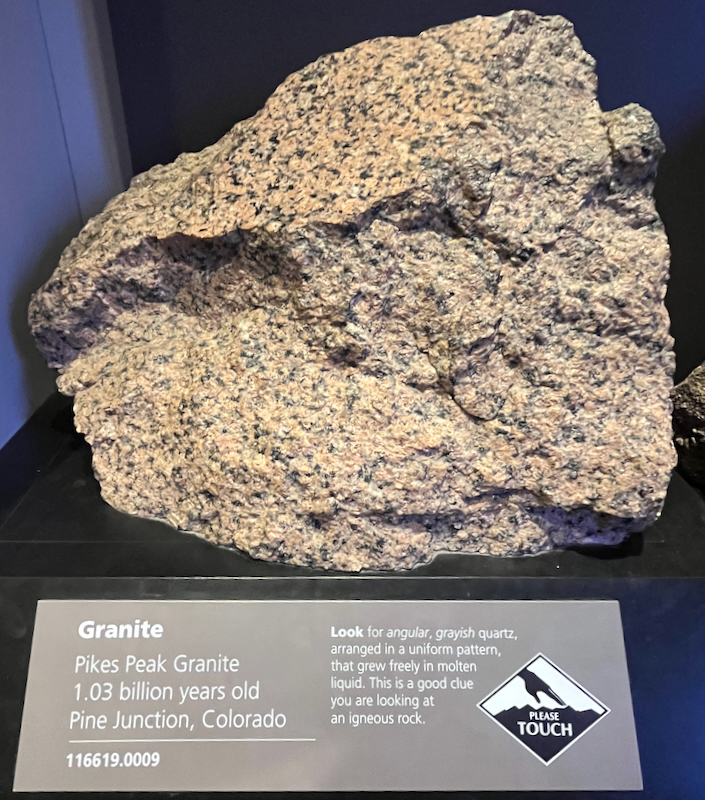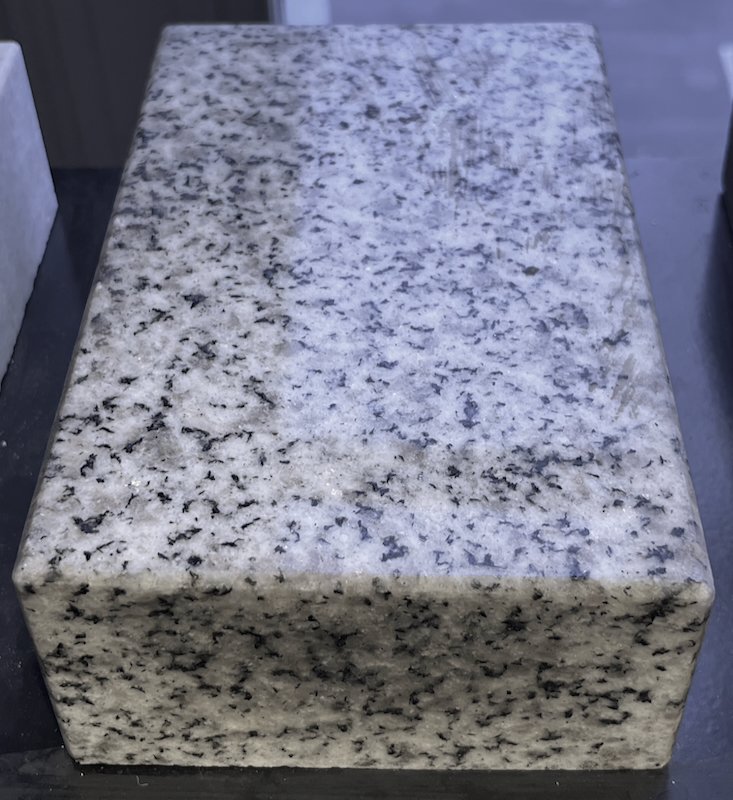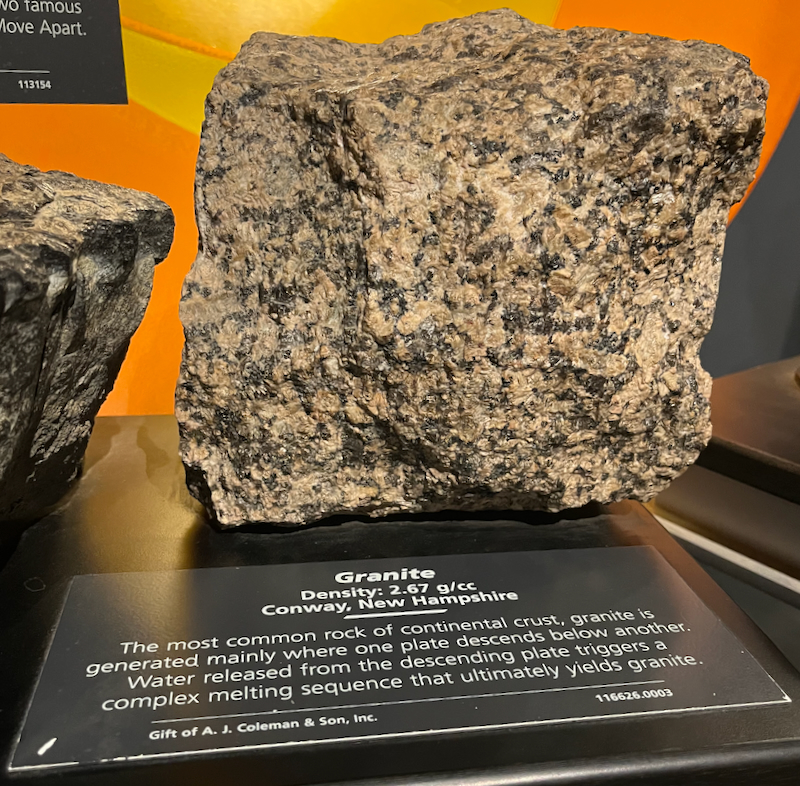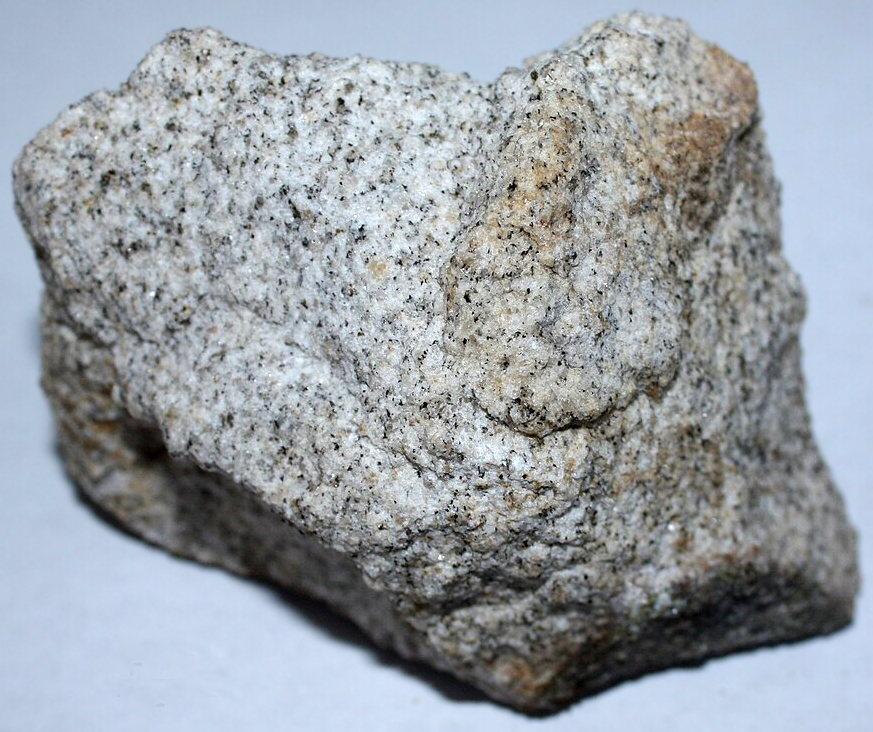Granite
As mentioned in the general information about rocks, granite is an igneous rock that forms from molten rock (magma) deep underground. Granite is made from feldspar, quartz, and mica, with feldspar being the biggest percentage and mica being the smallest. The White Mountains in the national park by the same name in New Hampshire are an example of a large deposit of granite called a batholith. The name comes from the Greek words for “depth rock” because of where granite forms deep in the Earth. Many other granite batholiths dot our planet, from Patagonia to Pike’s Peak, and Donegal, Ireland, to Darling, South Africa. Because it’s so common, you may have seen several different-colored stones called granite: it can be reddish or pinkish, it can be mostly white or light gray, or it can look dark gray. When it’s reddish or pinkish, that’s because it has red or pink feldspar in it. If it’s white or light gray, it has white feldspar in it, and the kind of mica it has in it is mostly muscovite. If it looks dark gray, because it has lots of small black pieces in it, the kind of mica in it is mostly biotite, which is mica that contains a lot of iron (Fe). Whatever color it might be, granite is a hard rock that’s very useful for building buildings, monuments and statues, stone stairs, the curbs along the side of the road, etc.
| Formula | Group or Type | Shape | Hardness | Specific Gravity | Streak | Luster |
|---|---|---|---|---|---|---|
| — | — | — | 6–7 | 2.6–2.7 | — | — |
